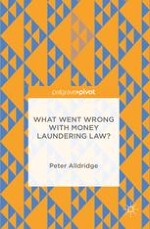
2016 | OriginalPaper | Buchkapitel
1. Introduction and a Short History
verfasst von : Peter Alldridge
Erschienen in: What Went Wrong With Money Laundering Law?
Verlag: Palgrave Macmillan UK
Aktivieren Sie unsere intelligente Suche, um passende Fachinhalte oder Patente zu finden.
Wählen Sie Textabschnitte aus um mit Künstlicher Intelligenz passenden Patente zu finden. powered by
Markieren Sie Textabschnitte, um KI-gestützt weitere passende Inhalte zu finden. powered by